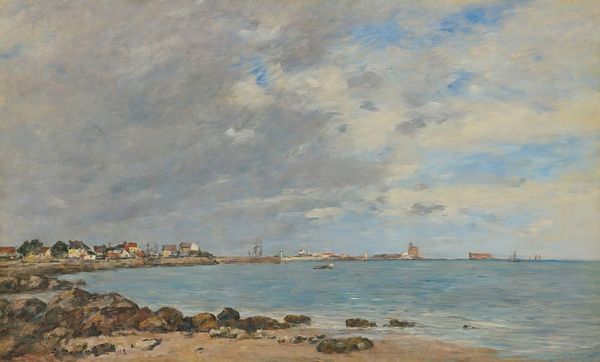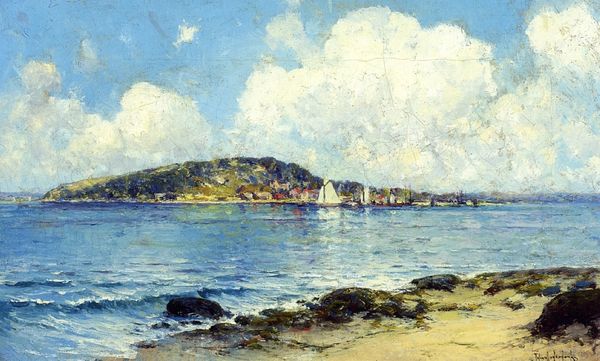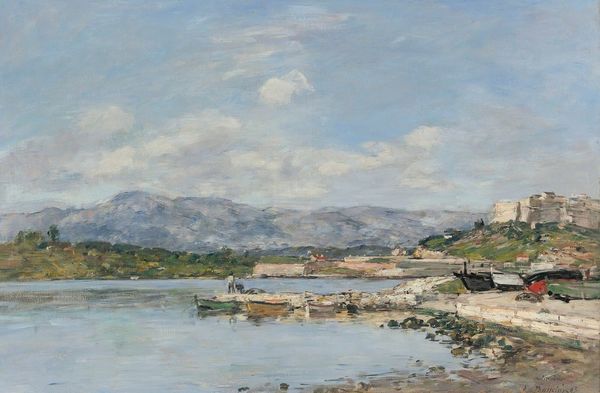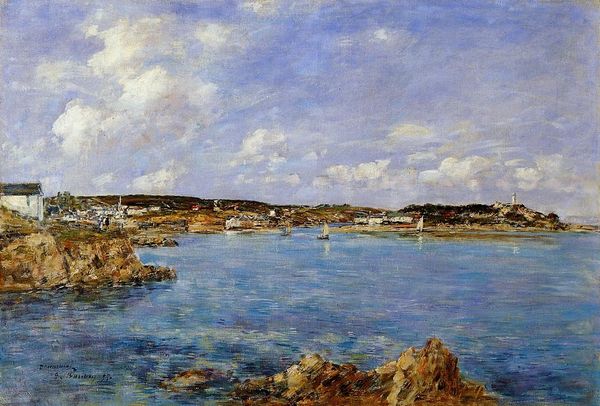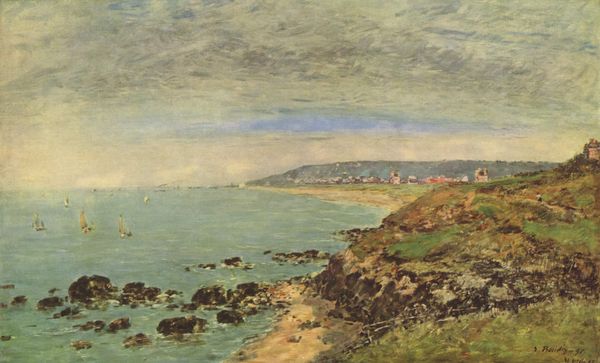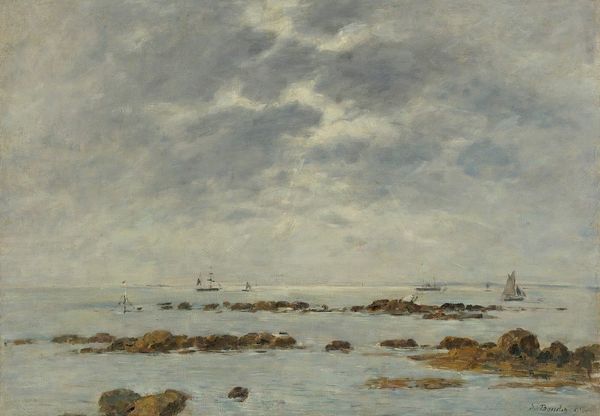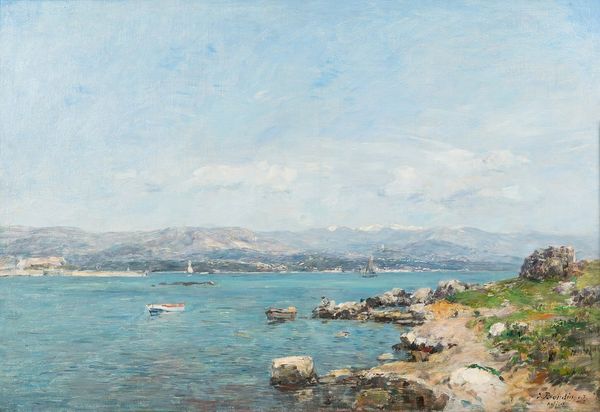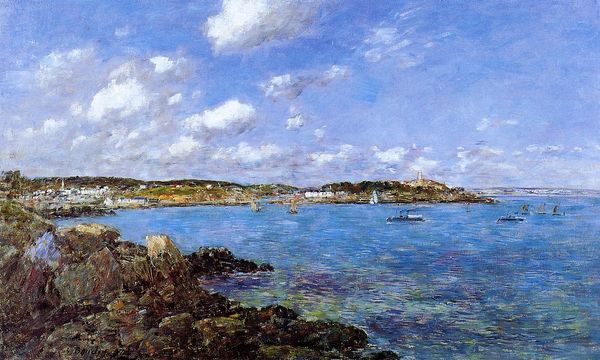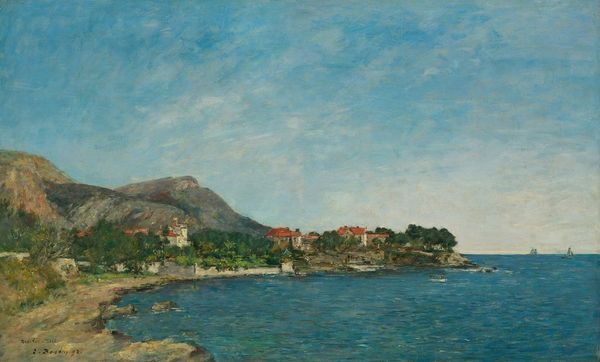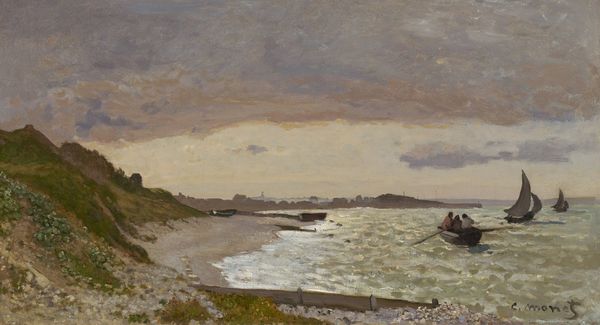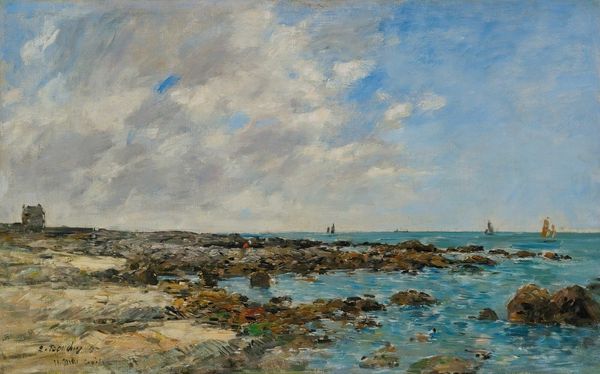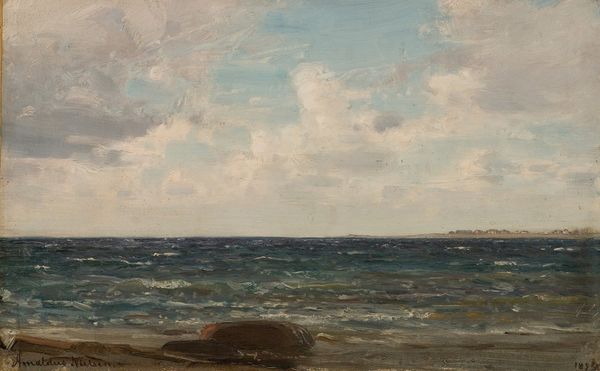
Copyright: Public Domain: Artvee
Curator: Standing before us is Eugène Boudin's "Douarnenez, la baie, vue de l’île Tristan," painted in 1897. Editor: It feels wonderfully breezy. The wisps of clouds mirroring those choppy waves, and that sailboat hinting at far-off lands... I feel like I could dive right in. Curator: It’s an excellent example of Boudin’s plein-air work. We often focus on masters like Monet, but Boudin was truly influential, known for his attention to atmospheric conditions captured directly from nature. The oil paint itself becomes a conduit for the very air and light he sought to portray. Editor: Speaking of the oil paint, look at how it’s layered. Thick impasto in the foreground rocks, thinning out into almost transparent washes in the sky. I wonder if the rocks were quarried from that very region; they remind me of raw umber pigment. It all suggests an interaction with the very landscape he depicts. The labor and extraction... Curator: Absolutely! It reveals the artist's sensitivity, I think, toward transience and the ephemeral. His paintings act as more than just straightforward recordings of scenery. They're expressions of perception, attempts to hold onto a fugitive moment. Almost an ache, a yearning. Editor: Well, perception is always mediated, isn't it? Even in these loose, seemingly spontaneous brushstrokes, you can still sense the weight of art history. He's consciously crafting an idyllic scene, one removed from the gritty reality of port towns and maritime industry—the fishing, the trade, all the physical labor. Curator: A valid point. Yet the loose handling, that very freedom he embraces… it feels authentically felt, right? Not so constructed or academic? There is an almost childlike openness and sincerity about it. It whispers of a world seen through slightly misty, ever-searching eyes. Editor: Perhaps. But all those pigments needed sourcing and grinding, canvases stretching, boats transporting him. It takes so much work and process to create the "feeling" he portrays so effortlessly. And what is left unrepresented—the human toll on these raw materials, on this 'idyll'? Curator: Yes, there are those things that stay hidden in that landscape. Thinking of it now I imagine him standing there as the last boats arrive at dusk. This image now becomes more melancholic. Editor: Precisely. Boudin gives us access to one perspective. A single, small part of the overall process behind our appreciation for art.
Comments
No comments
Be the first to comment and join the conversation on the ultimate creative platform.

